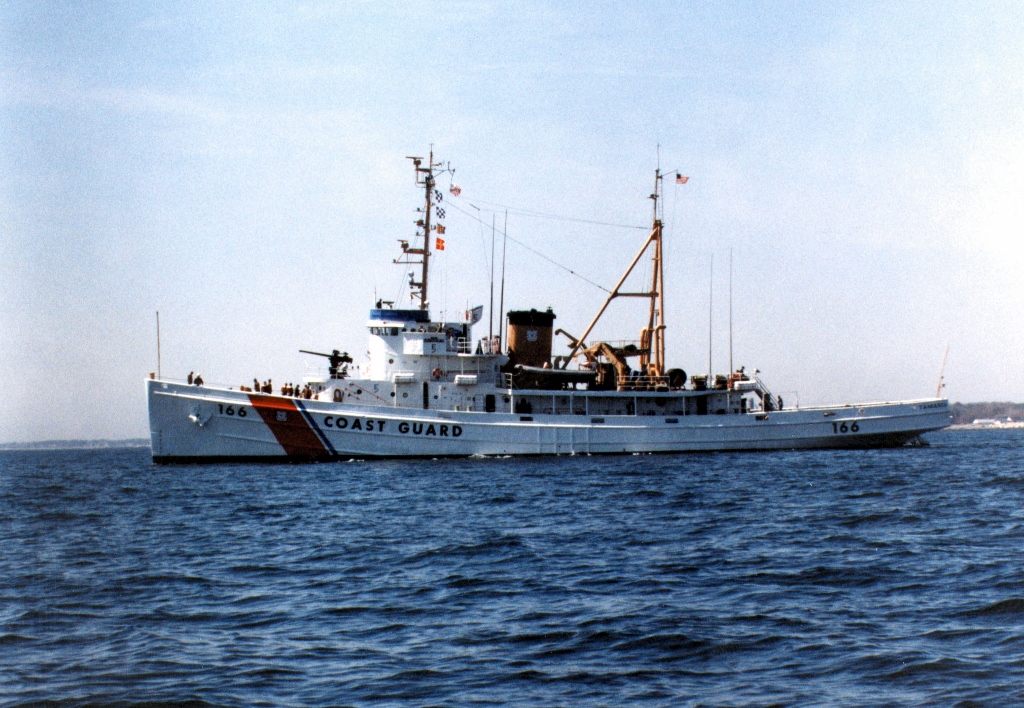Last week, I got to tag along with a bunch of old Coast Guard shipmates as they watched a big part of their younger lives slip beneath the waves.

The Tamaroa sinks on the Del-Jersey-Land Inshore Reef, an artificial fish haven 26 miles southeast of Cape May, N.J. Kirk Moore photo.
The Tamaroa, a 205’ World War II Navy fleet tug turned postwar Coast Guard cutter, was sunk May 10 on an artificial reef 26 miles southeast of Cape May, N.J.
Listening to their stories about serving on a geriatric cutter — the Tamaroa was already past 30 years old when the youngest men of the group were on her — reminded me of how much we hear about the Coast Guard “doing more with less.”
It is a point of pride with the Coast Guard, of course, that its people are the real strength. “We are a service that does more, because we have the best,” said Commandant Adm. Paul Zukunft, speaking to the 2017 graduating class at the Coast Guard Academy Wednesday.
Giving his first commencement speech at a service academy, President Donald Trump talked expansively of the graduates, their families, and the mission of the Coast Guard.
“And I’m proud to say that under my administration, as you just heard, we will be building the first new heavy icebreakers the United States has seen in over 40 years,” Trump said. “We’re going to build many of them. We need them. We need them.”
Despite conservative vs. liberal climate change debates, Republican and Democratic lawmakers in Washington generally agree that the opening of Arctic sea lanes means the United States needs icebreakers to project national sovereignty and protect maritime interests in the high north.
The Coast Guard is down to two polar ships: the 420’x82’x29’ medium-duty Healy, launched in 1997, and the 399’x83’6”x28’ heavy Polar Star, built in 1976. A sister ship, Polar Sea, is laid up in Seattle, and has become a spare parts bank to keep the Polar Star operating.

Coast Guard icebreakers Polar Sea and Polar Star in the ice channel near McMurdo, Antarctica, in 2002. USCG photo by Rob Rothway.
That makes the Coast Guard and its Congressional allies worried, because a major engine casualty or breakdown with the icebreakers could entail a complicated recovery scenario, and losing surface vessel access to Arctic waters and U.S. facilities in Antarctica.
Money for planning and design of the new ships finally emerged in the last year of the Obama administration. Coast Guard advocates in Congress ganged up fast in March, when the White House Office of Management and Budget floated a 14% cut to the Coast Guard budget and shutting off construction of a new national security cutter to help pay for a wall on the border with Mexico.
At the Academy graduation, Trump spoke of all the Coast Guard does, from interdicting drug smugglers, fighting human traffickers and search and rescue — presumably all the things that members of Congress and Homeland Security Secretary John Kelly have been educating the administration about since that budget cut idea vaporized.
But the Coast Guard budget is for now just level. That brings me back to the Tamaroa, the old 1940s Navy tug, famous for its roll and pitch.
The cutter could roll to 50 degrees, and reliably come up. In the seas of the Halloween storm of 1991 — the “Perfect Storm” of bestselling book and movie fame — it was the only cutter capable of making the rescue of three sailors and four downed Air National Guard crew.
“It was updated, it was pretty good,” recalled Paul Swanholm, who served on the Tamaroa as its last gunner’s mate from 1992 to 1994 when it was decommissioned. “That’s why they had the Tam on the East Coast, because that was the only boat that could handle those kinds of seas.”
In the movie “The Perfect Storm,” filmmakers pictured the Tamaroa as a modern 210’ cutter, but looking more like a Navy Aegis warship. That bothered a lot of the old shipmates, Swanholm said.
Finally the Coast Guard is well along in recapitalizing its fleet with the national security cutters, fast response cutters and other components. At the Academy commencement, Zukunft was expressing hope that will continue under this administration.





